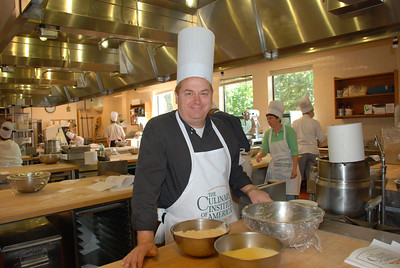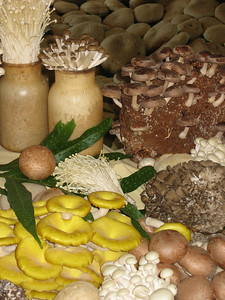
Usually, when I’m at home in southeastern Pennsylvania, I prefer either to cook or grab a simple meal at a nearby brewery or coffee shop. Driving 35 minutes into Philadelphia never sounds terribly appealing when I’m tired and hungry. However, over the past two weeks I broke from my usual routine and had some exceptional dinners in Philadelphia as a result. The restaurants? Amada and FARMiCiA in Old City, the Water Works in Fairmount Park and Vetri in Center City.
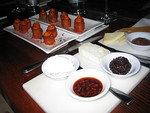 Authentic, earthy Spanish tapas with flavor and flair was what I wanted, and got, at Jose Garces’ Amada. www.amadarestaurant.com Lychee mojitos, cranberry-studded sangria and a cheese plate of Manchego paired with lavender honey, Cana de Cabra with a side of fig marmalade and Queso de Cabra accompanied by balsamic strawberries started the evening. Following this were small platters of bread slathered with tomato and garlic, patatas bravas or spicy potatoes topped with saffron aioli, salt cod croquettes, shrimp sauteed with chunks of garlic, and charred green onions as well as bowls of Spanish olives and chickpeas and spinach in tomato sauce. For dessert – the only miss of the evening for me – bananas torrijas or crispy Spanish bread topped with slices of carmelized bananas and surrounded by a mild-flavored banana anglaise and equally subtle maple syrup ice cream. A little too subdued to end such a flavorful feast.
Authentic, earthy Spanish tapas with flavor and flair was what I wanted, and got, at Jose Garces’ Amada. www.amadarestaurant.com Lychee mojitos, cranberry-studded sangria and a cheese plate of Manchego paired with lavender honey, Cana de Cabra with a side of fig marmalade and Queso de Cabra accompanied by balsamic strawberries started the evening. Following this were small platters of bread slathered with tomato and garlic, patatas bravas or spicy potatoes topped with saffron aioli, salt cod croquettes, shrimp sauteed with chunks of garlic, and charred green onions as well as bowls of Spanish olives and chickpeas and spinach in tomato sauce. For dessert – the only miss of the evening for me – bananas torrijas or crispy Spanish bread topped with slices of carmelized bananas and surrounded by a mild-flavored banana anglaise and equally subtle maple syrup ice cream. A little too subdued to end such a flavorful feast.
At FARMiCiA, www.farmiciarestaurant.com, the emphasis was on local, organic, and humanely grown foods. Not terribly surprising as the chef, Kevin Klause, came from an archetype of socially conscious cuisine, the White Dog Cafe, but certainly a major selling point. From a menu friendly to vegans and carnivores alike I ordered pan-seared wild salmon served over sauteed Swiss chard and lentils. Roasted beets and a creamy yet light herb sauce accompanied the trio. My dining companion selected a vegetarian entree – two herb roasted portobello mushroom steaks, sauteed greens and baked parmesan polenta. Dessert was a warm walnut brownie, courtesy of the adjacent Metropolitan Bakery. Drinks? Pomegranate martinis or “pom-tinis.” Simple and delicious dining.
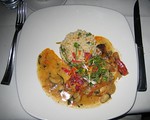 Located on the bank of the Schuykill River beneath the Philadelphia Museum of Art, the Water Works Restaurant, www.thewaterworksrestaurant.com, featured spectacular waterfront views, a spacious, crystal chandelier-lit dining room, and Mediterranean-inspired food. Although the surroundings were elegant and unforgettable, the cuisine seemed a tad tired, particularly for the prices charged. While my friends enjoyed their appetizers of lobster bisque, oysters, and onion soup and entrees of pan-seared black bass, pan-seared chicken, and duck breast, I felt that the herb-crusted salmon with fingerling potatoes and dessert of chocolate ouzo beignets had been done often, and better, elsewhere. Not bad but also not befitting the cost or amazing atmosphere.
Located on the bank of the Schuykill River beneath the Philadelphia Museum of Art, the Water Works Restaurant, www.thewaterworksrestaurant.com, featured spectacular waterfront views, a spacious, crystal chandelier-lit dining room, and Mediterranean-inspired food. Although the surroundings were elegant and unforgettable, the cuisine seemed a tad tired, particularly for the prices charged. While my friends enjoyed their appetizers of lobster bisque, oysters, and onion soup and entrees of pan-seared black bass, pan-seared chicken, and duck breast, I felt that the herb-crusted salmon with fingerling potatoes and dessert of chocolate ouzo beignets had been done often, and better, elsewhere. Not bad but also not befitting the cost or amazing atmosphere.
What was amazing was Vetri. www.vetriristorante.com Nationally renowned for its classic and contemporary Italian cuisine, Mark Vetri’s intimate, 35-seat restaurant lived up to the rave reviews on this evening. The food and service were exemplary, surpassing anything that I ever experienced in New York at Mario Batali’s celebrated Babbo. My husband and I began the night with glasses of prosecco and blood orange bellinis. For appetizers we shared a sweet onion crepe and cauliflower flan with shaved parmesan and an egg yolk center that cascaded onto the gold-accented plate. Our entrees were pillowy spinach gnocchi dressed with brown butter and almond tortellini with a delicate white truffle sauce. We left room for desserts of chestnut custard napoleon and chocolate polenta cake. Extraordinary!
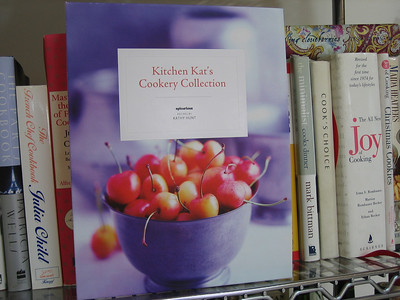


 On Moroccan nights I hold my silver teapot high above the dinner table and pour hot, sweet mint tea into delicately filigreed glasses. Unlike the tea wallahs of Morocco, who can do this without spilling a drop, I usually splash some on the tablecloth, if not on a guest. Still, the spectacle is worth the stained linens and startled friends.
On Moroccan nights I hold my silver teapot high above the dinner table and pour hot, sweet mint tea into delicately filigreed glasses. Unlike the tea wallahs of Morocco, who can do this without spilling a drop, I usually splash some on the tablecloth, if not on a guest. Still, the spectacle is worth the stained linens and startled friends.


 My mother may not have used the books often but, when she did, she filled the margins with ratings – a red “X” for unsuccessful recipes, a “good+” for, obviously, those she found worth making again. My favorite, the hardbound “Cook’s Choice,” is loaded with these notations. My first grade teacher Elma Alford’s chicken casserole warranted a “good+.” Yet, I can’t remember ever eating this well-reviewed meal.
My mother may not have used the books often but, when she did, she filled the margins with ratings – a red “X” for unsuccessful recipes, a “good+” for, obviously, those she found worth making again. My favorite, the hardbound “Cook’s Choice,” is loaded with these notations. My first grade teacher Elma Alford’s chicken casserole warranted a “good+.” Yet, I can’t remember ever eating this well-reviewed meal. 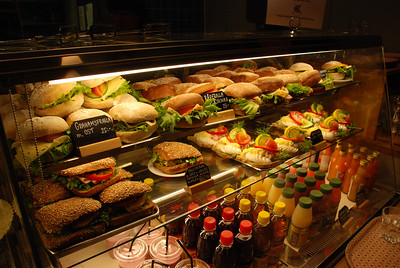


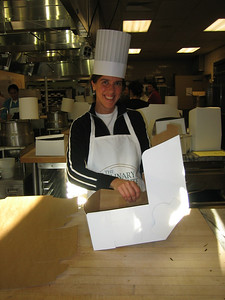 After a 2-hour classroom lecture, complete with tastings and discussions, our 15-member class had broken up into teams of three. Each group was assigned a food basket filled with ingredients from which it constructed several entrees. My team chose clams. Creating the recipes as we went, we whipped together grilled clams with lemon-butter, clam fritters with a dipping sauce and a salad of chopped tomatoes, cucumbers, scallions, mint, parsley and lemon juice.
After a 2-hour classroom lecture, complete with tastings and discussions, our 15-member class had broken up into teams of three. Each group was assigned a food basket filled with ingredients from which it constructed several entrees. My team chose clams. Creating the recipes as we went, we whipped together grilled clams with lemon-butter, clam fritters with a dipping sauce and a salad of chopped tomatoes, cucumbers, scallions, mint, parsley and lemon juice. 
